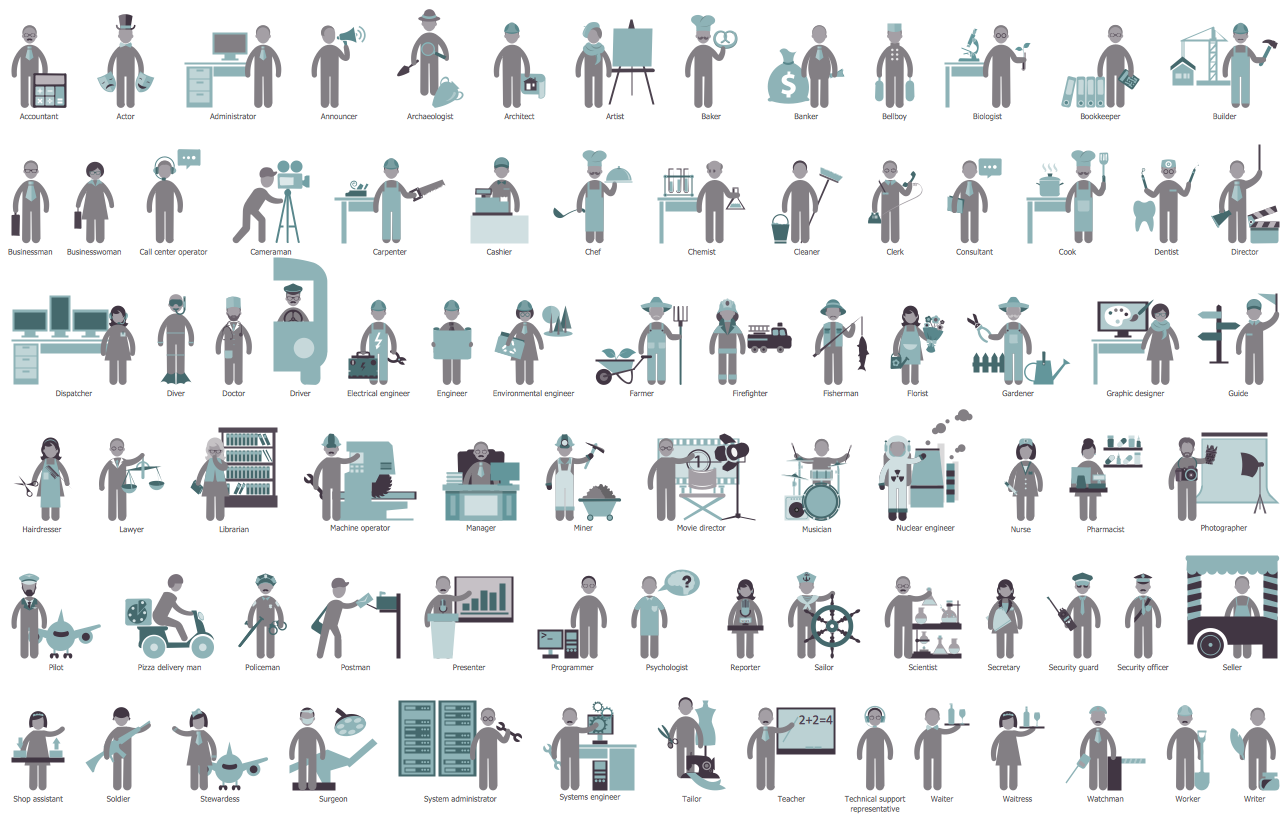HR Hierarchy Chart
The HR hierarchy is the structure that shows a hierarchy of jobs and authorities in an HR department of a company. The HR department is responsible for functional activities, hiring qualified employees, and managing employees by implementing the company's human resources policies, principles, and programs. Its responsibilities include training employees, establishing the compensation structure, maintaining workplace safety, and handling relations between employees. The hierarchy builds relationships, ensures uninterrupted work of the department and support between employees. HR hierarchy includes 4 levels:
- lower- or entry-level HR jobs;
- mid-level HR jobs;
- senior-level HR jobs;
- specialized HR positions.
Once a bachelor's degree in HR, business administration, or a similar field is got, candidates can apply for HR positions of lower- or entry-level. They include HR assistant, HR associate, staff coordinator, staff specialist, HR representative, HR administrator. In common, these positions report to the HR manager. These specialists help to recruit and hire employees and perform administrative tasks (payroll and benefits accounting, maintaining databases, employment records, contracts, and data entry). They create job descriptions and screen job candidates, search for new talents through the network, social media, job fairs, professional contacts, etc. They assess CVs, schedule interviews, assist in filling job applications and other paperwork, orientation new employees to all questions related to company policies, their roles, responsibilities, payroll, and benefits.
Mid-level HR jobs are for employees who have 2-3 work experience in an entry-level HR position. They include personnel manager, HR specialist, HR generalist, HR supervisor, HR analyst. As a rule, these roles report to the HR director or another upper-management position. These professionals have wide human resources duties, specialize in the training and development of the employees, lead training events and orientations, and oversee recruiting employees. They conduct interviews and review performance after probationary periods, oversee a team of lower-level employees, and regulate employees' relationships. They gather data about employees, conduct surveys and employee performance reviews, review statistics, support employees, regulate employee dynamics and interactions, and manage payroll, benefits, bonuses, and compensations.
Senior-level HR jobs or upper-management HR professionals are specialists with 10+ years of HR experience. They are responsible for all key decision-making in the department. These include HR manager, HR director, Chief human resources officer, Vice president of human resources. These specialists manage the HR department, control all HR tasks in the company, interact with all other HR specialists and guide their duties, develop strategies to hire the most qualified candidates and train employees, oversee staffing, budgeting, employee dynamics, and implementation of organizational strategy.
Specialized HR positions are provided in large companies and include highly specialized mid-level jobs specialists focused on a single area of HR. These can include Benefits administrator, Staffing manager, Recruiter, Employee relations manager, Safety manager, Development manager, and other professionals. Benefits administrator manages life insurance and healthcare benefits of the employees, their health, dental, vision, etc. Staffing manager drives all issues related to the company’s staff: recruitment, hiring, training, firing. Recruiter creates recruiting plans and searches the candidates for vacated or new jobs. Employee relations manager manages relationships between coworkers including relationships between employees and the head. Safety manager is responsible for employees' safety, safety training, and compliance laws. Development manager is responsible for employees' training, the development of training programs and materials.

Example 1. HR Hierarchy Chart Design in ConceptDraw DIAGRAM
Clear distribution of authority has a lot of benefits for the company's development. Visual hierarchy helps to identify who reports to whom in seconds. Design the HR hierarchy for your company without any effort. Show visually the structure of roles and authorities in the HR department at all levels (entry-level, mid-level, senior-level, and specialized HR roles). Evaluate efficiently your HR department structure, construct a recruitment model, make improvements, identify critical issues, fill gaps in the HR department structure fast and easily with ConceptDraw DIAGRAM charting and vector drawing software and HR Flowcharts solution.
Example 2. HR Professions Library Design Elements
HR Flowcharts Solution offers 7 libraries with 380+ vector design objects, pictograms, and clipart, which make the drawing process easy and comfortable for everyone:
- HR Symbols
- HR Flowchart
- HR Workflow
- HR Steps
- HR Arrows
- HR Department
- HR Professions
Example 3. Investment and Construction Application Procedures
The HR Charts you see on this page were created in ConceptDraw DIAGRAM software using the extensive drawing tools of the HR Flowcharts Solution and visually show hiring process on the HR Flowchart. They successfully demonstrate the solution's capabilities and professional results you can achieve. An experienced user spent 10-15 minutes creating each of these samples.
Use the powerful tools of the HR Flowcharts Solution for ConceptDraw DIAGRAM software for effective hiring process and for quick and easy creating professional-looking HR Flowcharts. Use successfully the created diagrams in your work and personal activity.
All source documents are vector graphic documents. They are available for reviewing, modifying, or converting to a variety of formats (PDF file, MS PowerPoint, MS Visio, and many other graphic formats) from the ConceptDraw STORE. The HR Flowcharts Solution is available for all ConceptDraw DIAGRAM users.

